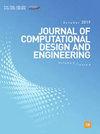基于局部自治竞争和谐搜索算法的卷积神经网络超参数优化
IF 6.1
2区 工程技术
Q1 COMPUTER SCIENCE, INTERDISCIPLINARY APPLICATIONS
引用次数: 0
摘要
卷积神经网络(CNN)由于其良好的性能,在图像、语音、文本等领域得到了广泛的应用。然而,它很容易受到超参数的影响。如何在合理的时间有效地配置超参数以提高cnn的性能一直是一个复杂的问题。为了解决这一问题,本文提出了一种基于局部自治竞争和谐搜索(LACHS)算法的CNN超参数自动优化方法。为避免LACHS算法复杂的参数调整对其性能的影响,采用参数动态调整策略,使节距调整概率PAR和阶进因子BW根据实际情况进行动态调整。为了加强邻域空间的精细搜索,减少长期陷入局部最优的可能性,设计了一种基于最优状态的自主决策搜索策略。为了使算法跳出局部拟合的困境,本文提出了一种局部竞争机制,使新声音与局部选择的最差谐波级数竞争。此外,提出了一种综合训练次数和识别准确率的评价函数。为了达到在不影响搜索结果的情况下节省计算成本的目的,它使每个模型的训练时间取决于学习率和批大小。为了证明LACHS算法配置CNN超参数的可行性,对Fashion-MNIST数据集和CIFAR10数据集进行了分类测试。将基于经验配置的CNN与基于经典算法的CNN进行超参数自动优化的比较。结果表明,基于LACHS算法的CNN的性能得到了有效的提高,因此该算法在超参数优化方面具有一定的优势。此外,本文还将LACHS算法应用于表情识别。实验表明,基于LACHS算法优化后的CNN的性能优于同类型人工设计的CNN。因此,本文提出的方法在实际应用中是可行的。本文章由计算机程序翻译,如有差异,请以英文原文为准。
Hyperparameters optimization of convolutional neural network based on local autonomous competition harmony search algorithm
Because of the good performance of convolutional neural network (CNN), it has been extensively used in many fields, such as image, speech, text, etc. However, it is easily affected by hyperparameters. How to effectively configure hyperparameters at a reasonable time to improve the performance of CNNs has always been a complex problem. To solve this problem, this paper proposes a method to automatically optimize CNN hyperparameters based on the local autonomous competitive harmony search (LACHS) algorithm. To avoid the influence of complicated parameter adjustment of LACHS algorithm on its performance, a parameter dynamic adjustment strategy is adopted, which makes the pitch adjustment probability PAR and step factor BW dynamically adjust according to the actual situation. To strengthen the fine search of neighborhood space and reduce the possibility of falling into local optima for a long time, an autonomous decision-making search strategy based on the optimal state is designed. To help the algorithm jump out of the local fitting situation, this paper proposes a local competition mechanism to make the new sound competes with the worst harmonic progression of local selection. In addition, an evaluation function is proposed, which integrates the training times and recognition accuracy. To achieve the purpose of saving the calculation cost without affecting the search result, it makes the training time for each model depending on the learning rate and batch size. In order to prove the feasibility of LACHS algorithm in configuring CNN superparameters, the classification of the Fashion-MNIST dataset and CIFAR10 dataset is tested. The comparison is made between CNN based on empirical configuration and CNN based on classical algorithms to optimize hyperparameters automatically. The results show that the performance of CNN based on the LACHS algorithm has been improved effectively, so this algorithm has certain advantages in hyperparametric optimization. In addition, this paper applies the LACHS algorithm to expression recognition. Experiments show that the performance of CNN optimized based on the LACHS algorithm is better than that of the same type of artificially designed CNN. Therefore, the method proposed in this paper is feasible in practical application.
求助全文
通过发布文献求助,成功后即可免费获取论文全文。
去求助
来源期刊

Journal of Computational Design and Engineering
Computer Science-Human-Computer Interaction
CiteScore
7.70
自引率
20.40%
发文量
125
期刊介绍:
Journal of Computational Design and Engineering is an international journal that aims to provide academia and industry with a venue for rapid publication of research papers reporting innovative computational methods and applications to achieve a major breakthrough, practical improvements, and bold new research directions within a wide range of design and engineering:
• Theory and its progress in computational advancement for design and engineering
• Development of computational framework to support large scale design and engineering
• Interaction issues among human, designed artifacts, and systems
• Knowledge-intensive technologies for intelligent and sustainable systems
• Emerging technology and convergence of technology fields presented with convincing design examples
• Educational issues for academia, practitioners, and future generation
• Proposal on new research directions as well as survey and retrospectives on mature field.
 求助内容:
求助内容: 应助结果提醒方式:
应助结果提醒方式:


